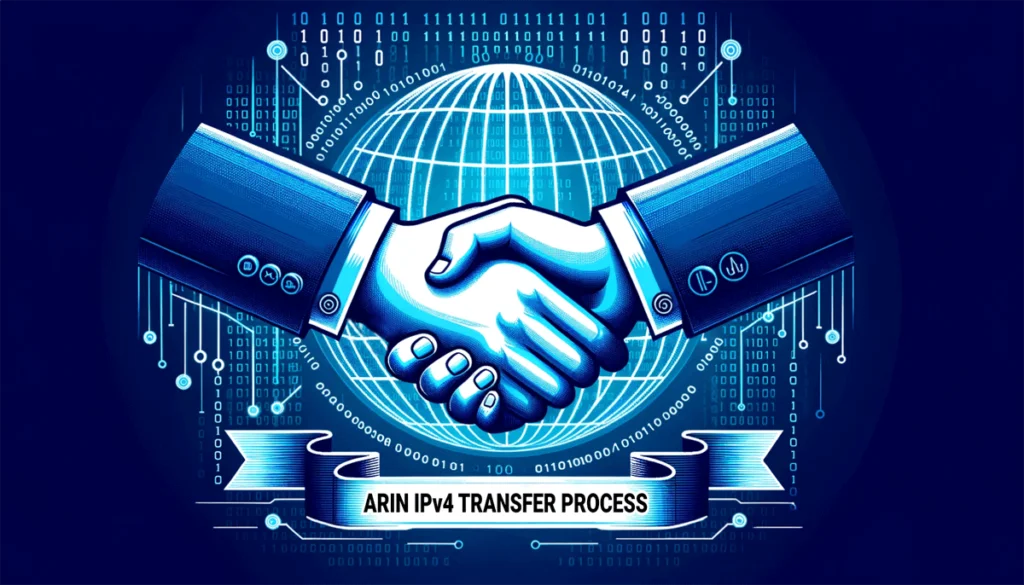The Asia-Pacific Network Information Centre (APNIC) is responsible for managing IP address allocations in the Asia-Pacific region. With the exhaustion of IPv4 addresses, the transfer of IPv4 address blocks has become a crucial process. This guide provides a detailed overview of the APNIC IPv4 Transfer Process, including the steps involved, conditions, and key considerations.
The APNIC IPv4 Transfer Process is designed to facilitate the distribution of IPv4 addresses from entities that no longer need them to those in need. This process is governed by specific policies and guidelines to ensure the integrity of the network.
Table of Contents
Types of APNIC IPv4 Transfers
1. Within the APNIC region
Transfers between current APNIC account holders.
2. Inter-RIR transfers
Transfers between APNIC account holders and organizations in other RIR regions. Learn more about Regional Internet Registries (RIRs).
3. Historical IPv4 transfers
Transfers of historical IPv4 resources to current APNIC account holders.
4. Mergers, acquisitions, or takeovers
Transfers through organizational changes.
APNIC IPv4 Transfer Steps
Transfers within APNIC
- Starting the Transfer:
- The source account initiates the transfer using MyAPNIC.
- The recipient account acknowledges the transfer within 30 days.
- Both parties must be APNIC account holders.
- Evaluation by APNIC:
- APNIC evaluates the transfer based on specific criteria, including compliance with current policies.
- The recipient must demonstrate a detailed plan for using the transferred resources within 24 months.
- Payment of Transfer Fees:
- Transfer fees are applicable for approved IPv4 transfers within the APNIC region.
- Fees must be paid before the registration update in the APNIC Whois Database.
- Transfer Pre-approval (Optional):
- Recipient accounts can request pre-approval to manage the transfer and avoid delays.
- Pre-approvals are valid for 24 months, with reminders sent regarding expiry dates.
- Finalization and Registration:
- Upon approval and payment of fees, the transfer is recorded in the APNIC Whois Database.
- APNIC maintains a public log of all transfers.
- Subsequent Pre-approvals (If Applicable):
- Recipients can lodge subsequent pre-approval requests, which will override existing requests.
Inter-RIR transfers
Inter-RIR transfers involve the transfer of IPv4 addresses between APNIC account holders and organizations in other RIR regions. These transfers follow similar conditions to within-region transfers, with additional considerations for the counterpart RIR’s policies.
Alpha Infolab’ Broker Services
Navigating the APNIC IPv4 Transfer Process can be somewhat complex. As an APNIC registered IPv4 broker, Alpha Infolab offers specialized broker services to assist both buyers and sellers in the process. With expertise in both within-region and Inter-RIR transfers, Alpha Infolab ensures a smooth and compliant transfer experience.
Whether you are buying IP addresses or looking to transfer unused address space, Alpha Infolab’ dedicated team is here to guide you every step of the way.
Frequently Asked Questions
How can I initiate an APNIC IPv4 transfer?
The transfer process begins with the source account initiating the transfer using MyAPNIC. Both the source and recipient must be APNIC account holders. Alpha Infolab offers specialized broker services to assist in the process.
What are the fees associated with an APNIC IPv4 transfer?
There are specific transfer fees for approved IPv4 transfers within the APNIC region. The fees must be paid before the transfer is processed.
Can I transfer IPv4 addresses between APNIC and other RIRs?
Yes, Inter-RIR transfers are possible between APNIC account holders and organizations in other RIR regions, following specific conditions and policies.
What is the role of Alpha Infolab in the APNIC IPv4 transfer process?
Alpha Infolab offers broker services to assist both buyers and sellers in the APNIC IP Purchase Process, ensuring a smooth and compliant transfer experience for both within-region and Inter-RIR transfers.
Are there any restrictions on transferring IPv4 addresses within the APNIC region?
Yes, there are specific conditions and restrictions, such as the minimum transfer size and a prohibition on transferring addresses from the 103/8 free pool for a minimum of five years.
How long does the APNIC IPv4 transfer process take?
The transfer process timeline can vary based on the complexity of the transfer, compliance with policies, and whether pre-approval is sought. Engaging a broker like Alpha Infolab can help streamline the process.
Where can I find official information about the APNIC IPv4 transfer process?
The official APNIC website provides detailed information, guidelines, and policies related to the APNIC IPv4 Transfer Process.
Note: This article is intended as a general guide and does not replace the official APNIC policies and guidelines. Always refer to the official APNIC website for the most accurate and up-to-date information.





